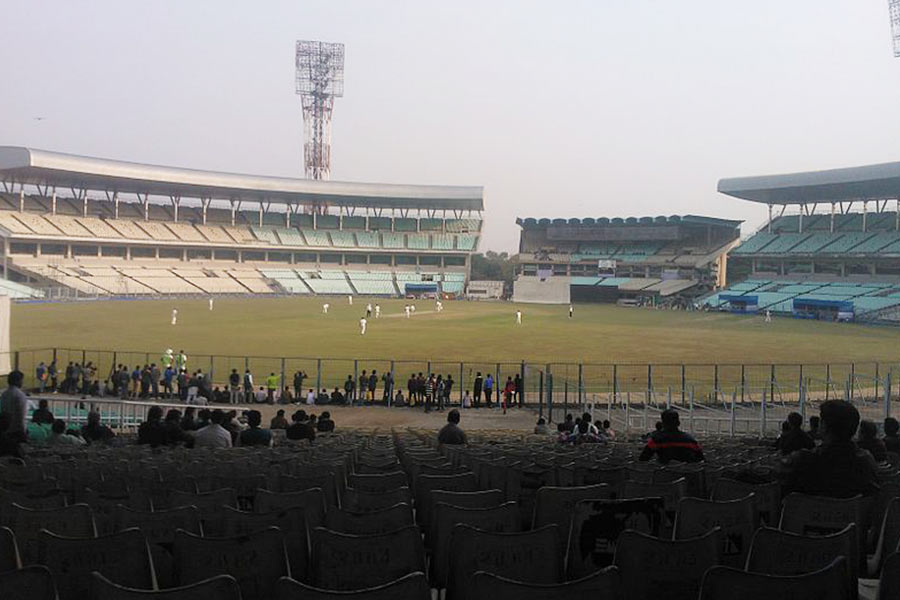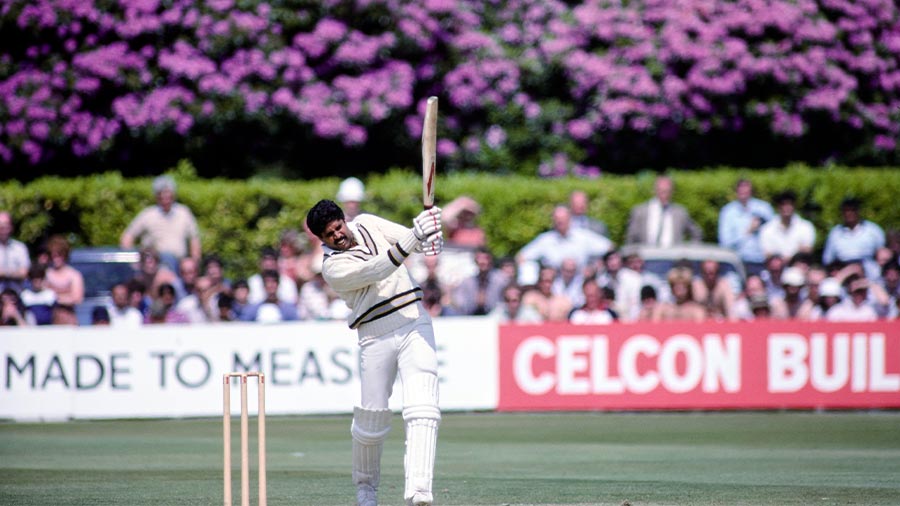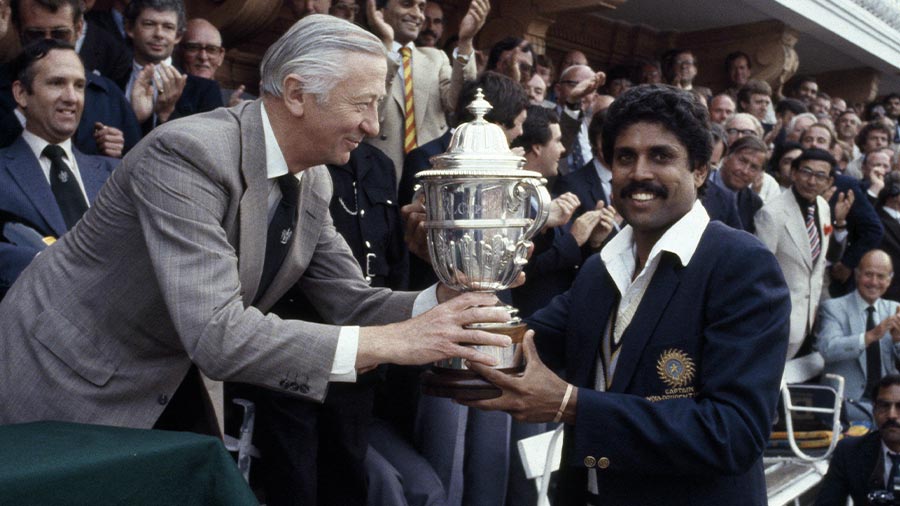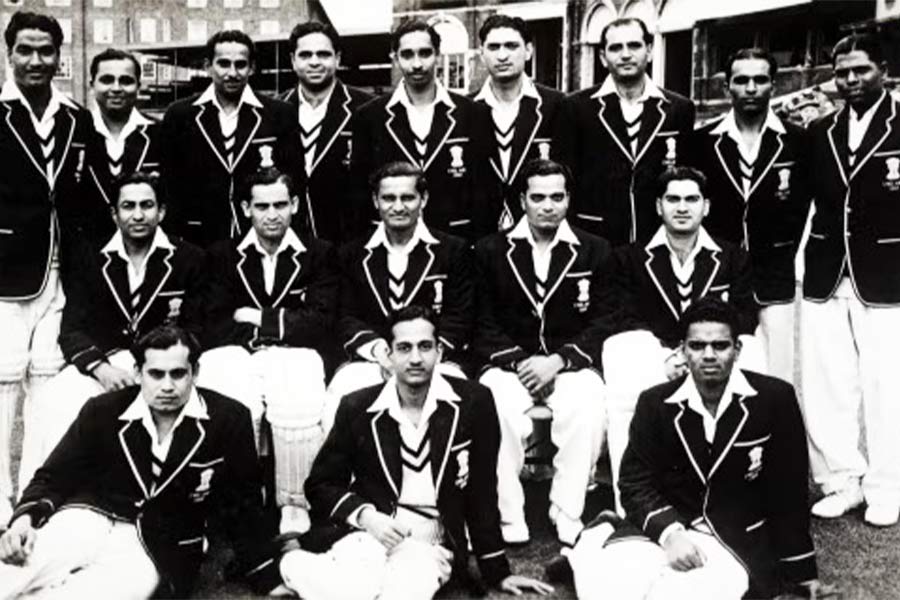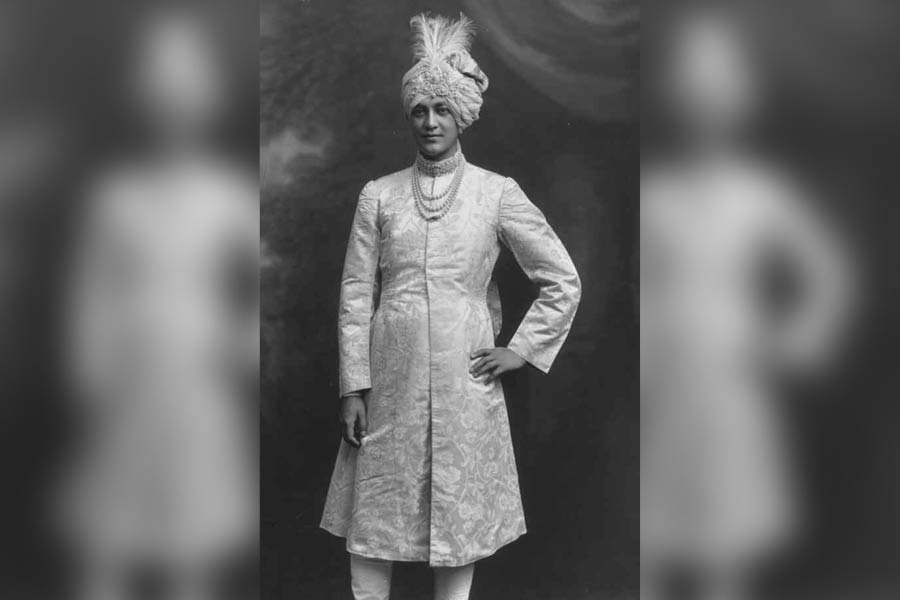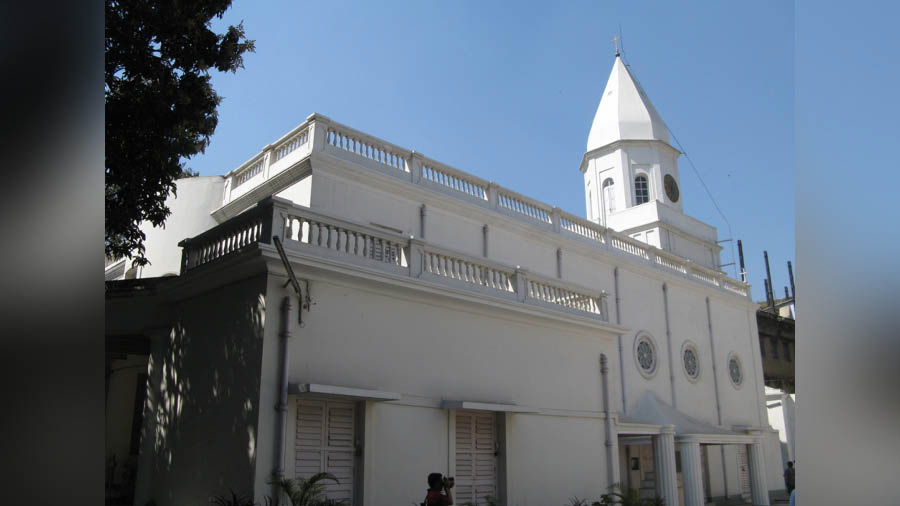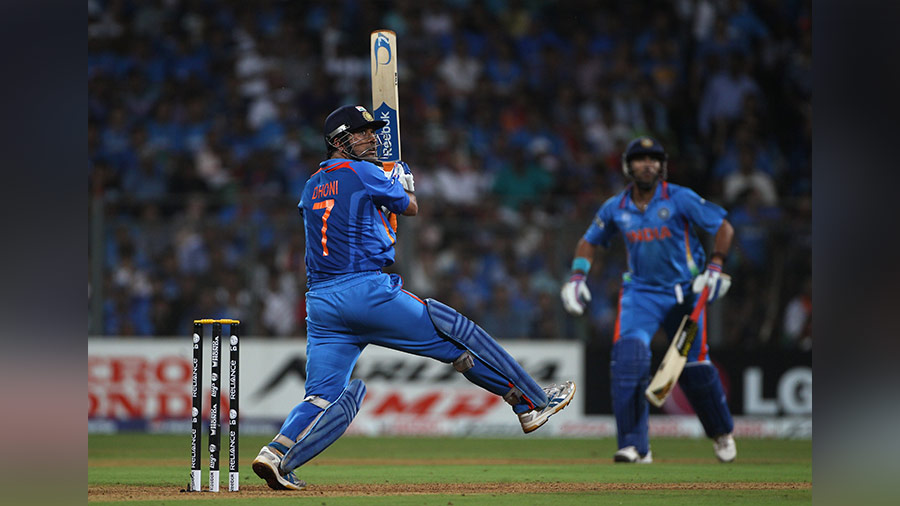Cricket. India’s national obsession and favourite pastime. By the time Bhuvan’s merry band got the better of Captain Russell (Lagaan – set in 1893), cricket already had spent more than 150 years in India. It is though difficult to accurately time when the game was first played on these shores. The earliest documented reference comes from the documents of an East India company sailor named Clement Downing of 1737 which references a game of cricket he and his fellow seafarers had played in Cambay in 1721.
The Madras Courier of December 22-23, 1792, name drops the Calcutta Cricket Club playing against Gentlemen of Barrackpore and Dum Dum. This is the first official recorded reference to the Calcutta Cricket Club. It is somewhat erroneously believed, due to the above entry that the club was founded in 1792, thus making it the second oldest surviving cricket club in the world, behind only the venerable Marylebone Cricket Club (MCC) founded five years earlier.
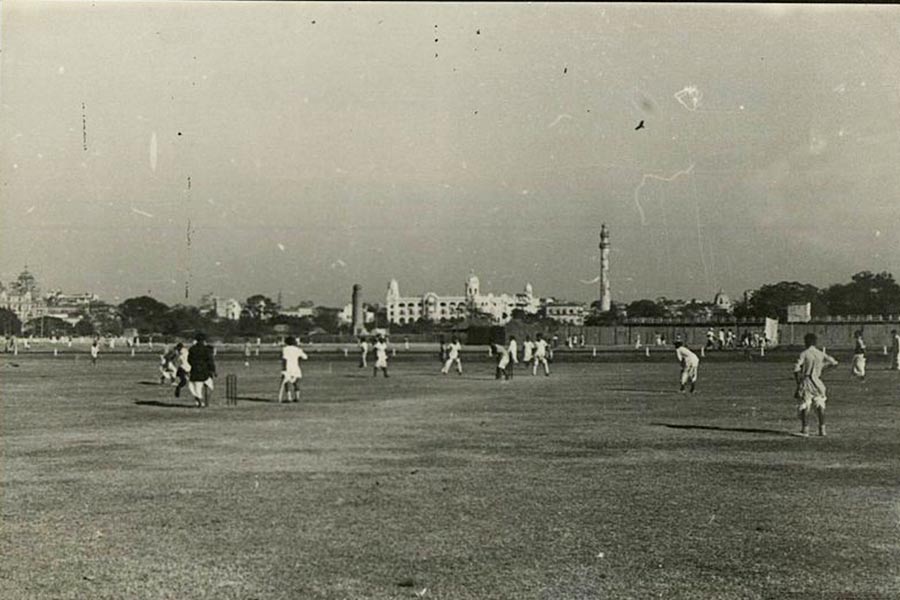
A match in progress at the Calcutta Cricket Club Wikimedia Commons
However, the book John Barley Corn Bahadur by Major Hobbes quotes the Bengal Gazette of December 16, 1780, as below: “The Calcutta Cricket Club enjoys today the use of a splendid site, as good as can be found anywhere. One reference is enough. At a Meeting, it was decided to admit Officers of Her Majesty’s Regiments, quartered in Fort William, Dum Dum, Alipore and Barrackpore on payment of half fees because their pay did not permit them to incur the expense. As the Cricket Club had the free use of regimental bands, they had to show some appreciation, so the underpaid batsmen gave their services to help their officers enjoy themselves.” The Calcutta Cricket Club thus appears to clearly predate the MCC.
As the 18th century gave way to the 19th and the European presence in Calcutta grew, the English gentleman’s game also gained in popularity. In January 1804, a game was played at the Maidan between the Etonian old boys working as the company’s writers versus non-Etonians, who were designated as ‘Calcutta’. The Etonians won with Robet Vansittart scoring the first documented century on Indian soil.
By the time George W. Johnson, Esq, arrived in Calcutta in 1843, he was describing his experiences thus: “In such a climate as that of India, those who have never entered through the Ghauts of Calcutta might conclude that no such laborious sport as cricket would be pursued there. Yet, if the voyager arrives during the comparatively cold season, and land in the evening at Chandpal Ghaut, he will at once ascend to the finest view of the City of Palaces, looking upon it across a plain forming the most magnificent cricket-ground in the world, and where the Calcutta Club play regularly.”

A match being played Rangoon and Calcutta Cricket Club at the Calcutta Cricket Club ground on January 15, 1861 Wikimedia Common
Yet, the club was faced with one constant predicament — lack of a fixed ground. In absence of the former, they played their games on a stretch of the Esplanade between the Government House and Fort William, parallel to the river. It was one such game which was probably witnessed by the arriving George W. Johnson. In 1841, the club had received a permission to put a fence enclosing their ground but soon, the army headquarters objected to this and the club had to shift to the eastern side of the Auckland Circus Gardens, the vibrant patch of green in the heart of the city build under the patronage of Governor-General Lord Auckland, Earl of Eden.
In 1862, the club again had to face the ire of Fort William as it was decreed by the Brigadier General, Presidency Division that “open space is preserved, as a general rule around forts as a Military precaution”. By 1864, the club had to move further east. For pavilion, the club had a “wretched” hut - requests for a more permanent structure were summarily denied. However, in April of that year, the governor-general finally permitted the Calcutta Cricket Club (CCC) to build their long-awaited pavilion. Construction started in the right earnest with finest imported teak from Burma. A long room similar to the one at the MCC pavilion at Lord’s was also designed. The birth of the fabled Eden Gardens thus took place. The grand pavilion survived till the 1970s when it was demolished to build the BC Roy Club House.
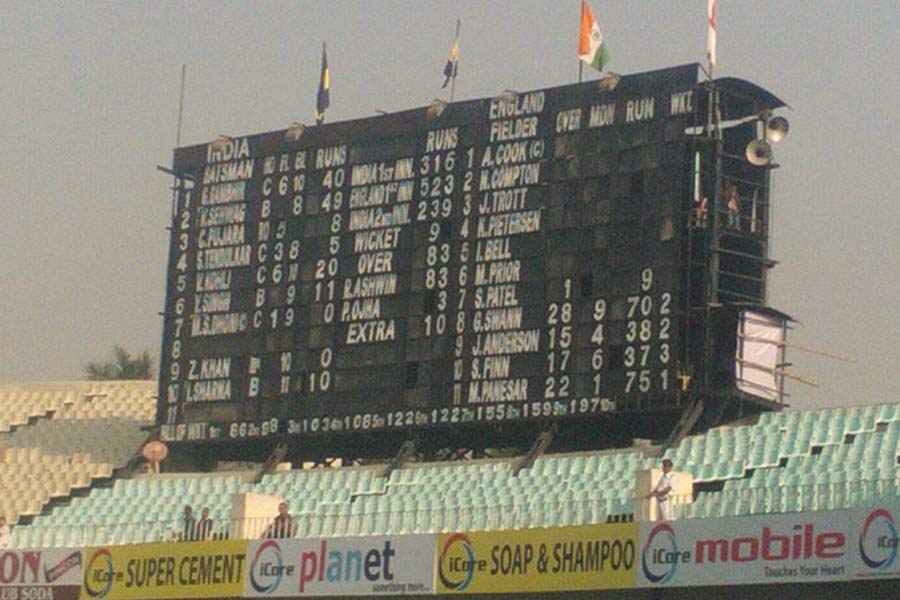
The manual scoreboard at Eden Gardens
In 1888-89, Calcutta (and India) got its first taste of international cricket as an English amateur team, led by G.F. Vernon of Middlesex arrived in Calcutta to play a series of matches. This was followed by another team visiting in 1892-92 led by Lord Hawke, who played two games in Calcutta vs the CCC and a Bengal Presidency XI.
By this time, a remarkable social change had started to take place. So far, cricket in the city had been exclusive to the European ruling class. Enter - Sarada Ranjan Ray (elder brother of Upendrakishore Ray Chowdhury). Ray was a fine cricketer in his own right and also a good organiser. Together with his brothers, he founded the Dacca College Cricket Club in the early-1880s. In 1884, a team of Dacca University coached by Sarada Ranjan visited Calcutta and defeated an XI of the Presidency College.
Ray would play a leading role in the formation of Town Club in 1884, the first Indian cricket club. Town Club’s lead would be followed by several more ‘native’ clubs like Kumartuli Institute (1885), Aryan Club (1886), and Sporting Union (1886) all of which picked up cricket as a tool of expressing nationalistic fervour against European clubs like CCC, Calcutta Rangers, Dalhousie Athletic Club, Ballygunge Cricket Club and so on.
There was a game played between CCC and Town Club sometime in the mid-1880s, where a lad by the name of Narendranath Dutta picked up 7 wickets. The young man didn’t pursue cricket though the world would know him in some years’ time as Swami Vivekananda.
In the early part of the 20th century, two developments massively impacted growth of cricket in Bengal province. One was the establishment of the Bengal Gymkhana in 1910 by some wealthy families of Bengal. The other was the active support for the game from the royal families of Cooch Behar, Natore, Mymensingh and Rangpur.
Nripendra Narayan Bhup Bahadur of Cooch Behar and Jagadindra Nath Roy of Natore in particular were key figures who maintained playing facilities in Calcutta-Cooch Behar at the Woodland Gardens of Alipore (where Woodlands Hospital stands today) and Natore at the Natore Park near the Ballygunge area (present-day Picnic Gardens, off Ballygunge Phari). Interestingly though, the two patron groups of cricket from Bengal had clearly different objectives. While Sarada Ray and his ilk wanted the game to emerge as a leveller against their colonial rulers, for the Indian princes and kings, it was more an opportunity to impress the European ruling class and carry favour from them. Despite that, both played a major rule in the growth of cricket in Calcutta and Bengal.
The first ever first-class match at the Eden Gardens took place in the winter of 1917/18 - it saw the Maharajah of Cooch Behar’s XI take on the Bengal Governor’s XI. A major landmark was to take place in 1926/27 when an MCC side led by former England captain Arthur Gilligan came to play in Calcutta, the first ever recognised MCC tour to India. This tour also happened largely due to the efforts of the CCC. In 1928, the Cricket Association of Bengal & Assam (CAB) was formed with the president and secretary of the CCC taking over the same roles for the association. In 1934, Eden Gardens hosted it's first test match as India took on Douglas ‘Bodyline’ Jardine’s Englishmen. Cricket had well and truly arrived in Calcutta.
Closing note: The Calcutta Cricket Club would merge with the Ballygunj Cricket Club and move to the latter’s grounds at Ballygunge, adjacent to Gurusaday Datta Road. Later on, the Calcutta Football Club would merge with the CCC to form today’s Calcutta Cricket and Football Club (CCFC).
Acknowledgements:
· Eden Gardens: Legend & Romance – Raju Mukherji
